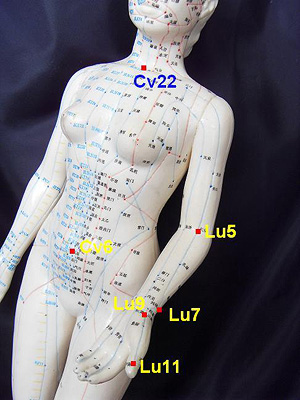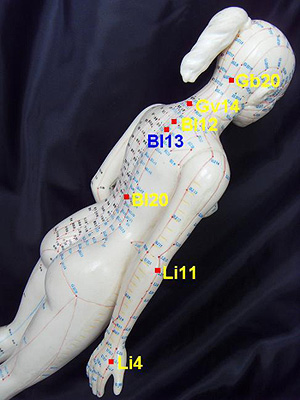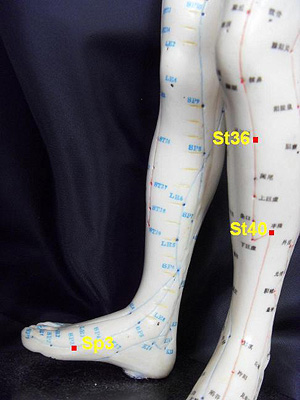Acupuncture and Moxibustion Therapies
Coughing is a problem that can be due to many different things. You should not ignore it when your cough lingers for weeks or becomes disruptive to daily life. A doctor is the most qualified person to help you deal with the cough.
In Traditional Chinese medicine (TCM), physicians do not follow standard Western pathological classifications of disease, but rely on a complex pattern of signs and symptoms to choose remedies. The remedies are typically individualized according to the imbalance of the body measured by various parameters including yin &yang, qi (vital energy), blood and body fluids, they create comprehensive regulatory effects to the body and aim to rebuild a new internal balance.
Acupuncture can alter respiratory movements; it modulates the contraction and secretion actions of the air ways. According to TCM theory, coughing is regarded as an abnormal qi activity of the lung system that may result from external or internal origin. External origin coughs are usually due to pathogenic invasions, while internal origin coughs are due to organ dysfunctions. When designing a remedy for a cough, TCM physicians will focus on:
- Enhancing various pathogenic dispersing processes of the body;
- Promoting tissue repairing and organ functioning.
Acupuncture and moxibustion are non-medicinal alternatives for treating cough. They are effective in the early stages of a cough, or can work together with other methods for stubborn cases. With appropriate point selection and stimulating techniques, the therapies can redirect qi movement of the lungs and arrest coughing. Below are the protocols for treating coughs.
| Major acupoints |
|
Other assistant acupoints are selected according to specific disharmony pattern.
| Wind-cold cough (Coughing with thin and white phlegm, nasal congestion, headache, chills and fever) |
* Fei shu (Bl 13) and da zhui (Gv14) are suggested for moxibustion. |
||||||||||
| Wind-heat coughs (Coughing with yellow and thick phlegm, throat soreness, thirst, fever and headache) |
* Fei shu (Bl 13) and da zhui (Gv14) are suggested for blood-letting. |
||||||||||
| Phlegm-dampness cough (Coughing with copious white and sticky phlegm, fatigue, stuffiness in the chest and stomach, and a thick tongue coating) |
* All the points can be used with moxibustion. |
||||||||||
| Lung-deficient cough (A productive weak coughing with thin and white phlegm, shortness of breath, wheezing, poor appetite, fatigue and sweating) |
* All the points are suggested for moxibustion. |


 Body points for coughing
Body points for coughing


